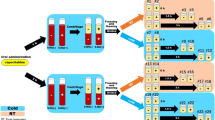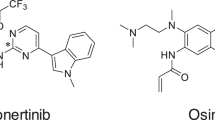Abstract
The cardiotoxicity of 5-fluorouracil (FU) was attributed to impurities present in the injected vials. One of these impurities was identified as fluoroacetaldehyde which is metabolised by isolated perfused rabbit hearts into fluoroacetate (FAC), a highly cardiotoxic compound. FAC was also detected in the urine of patients treated with FU. These impurities were found to be degradation products of FU that are formed in the basic medium employed to dissolve this compound. To avoid chemical degradation of this antineoplastic drug, the solution of FU that will be injected should be prepared immediately before use.
This is a preview of subscription content, access via your institution
Access options
Subscribe to this journal
Receive 24 print issues and online access
$259.00 per year
only $10.79 per issue
Buy this article
- Purchase on Springer Link
- Instant access to full article PDF
Prices may be subject to local taxes which are calculated during checkout
Similar content being viewed by others
Author information
Authors and Affiliations
Rights and permissions
About this article
Cite this article
Lemaire, L., Malet-Martino, M., de Forni, M. et al. Cardiotoxicity of commercial 5-fluorouracil vials stems from the alkaline hydrolysis of this drug. Br J Cancer 66, 119–127 (1992). https://doi.org/10.1038/bjc.1992.227
Issue Date:
DOI: https://doi.org/10.1038/bjc.1992.227
This article is cited by
-
Fluoropyrimidine-Induced Cardiotoxicity: Manifestations, Mechanisms, and Management
Current Oncology Reports (2016)
-
A systematic review of the pathophysiology of 5-fluorouracil-induced cardiotoxicity
BMC Pharmacology and Toxicology (2014)



